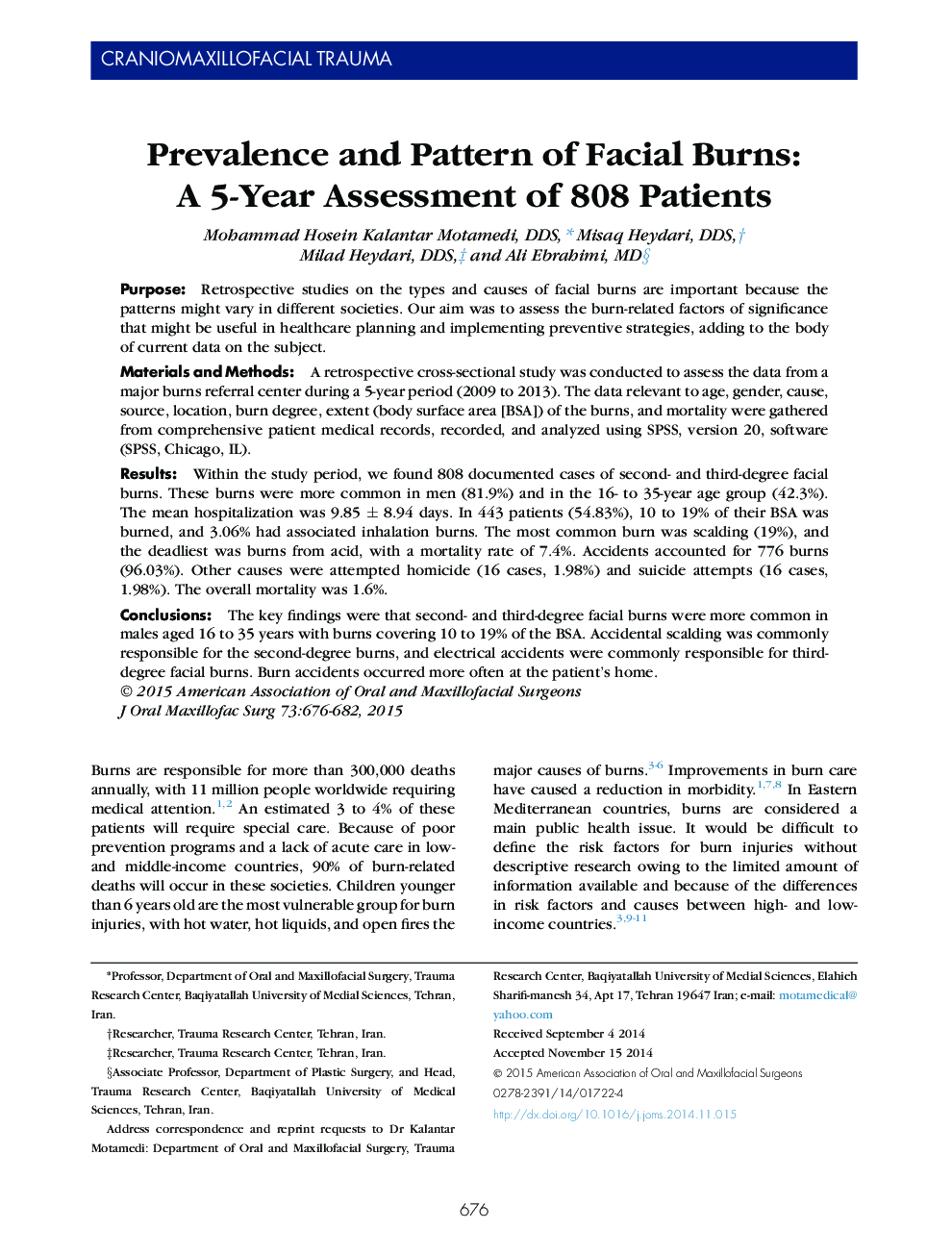| Article ID | Journal | Published Year | Pages | File Type |
|---|---|---|---|---|
| 3153146 | Journal of Oral and Maxillofacial Surgery | 2015 | 7 Pages |
PurposeRetrospective studies on the types and causes of facial burns are important because the patterns might vary in different societies. Our aim was to assess the burn-related factors of significance that might be useful in healthcare planning and implementing preventive strategies, adding to the body of current data on the subject.Materials and MethodsA retrospective cross-sectional study was conducted to assess the data from a major burns referral center during a 5-year period (2009 to 2013). The data relevant to age, gender, cause, source, location, burn degree, extent (body surface area [BSA]) of the burns, and mortality were gathered from comprehensive patient medical records, recorded, and analyzed using SPSS, version 20, software (SPSS, Chicago, IL).ResultsWithin the study period, we found 808 documented cases of second- and third-degree facial burns. These burns were more common in men (81.9%) and in the 16- to 35-year age group (42.3%). The mean hospitalization was 9.85 ± 8.94 days. In 443 patients (54.83%), 10 to 19% of their BSA was burned, and 3.06% had associated inhalation burns. The most common burn was scalding (19%), and the deadliest was burns from acid, with a mortality rate of 7.4%. Accidents accounted for 776 burns (96.03%). Other causes were attempted homicide (16 cases, 1.98%) and suicide attempts (16 cases, 1.98%). The overall mortality was 1.6%.ConclusionsThe key findings were that second- and third-degree facial burns were more common in males aged 16 to 35 years with burns covering 10 to 19% of the BSA. Accidental scalding was commonly responsible for the second-degree burns, and electrical accidents were commonly responsible for third-degree facial burns. Burn accidents occurred more often at the patient's home.
